The MERIDA ONE-TWENTY platform won our last high-end trail bike group test. Unfortunately, its performance wasn’t as convincing in this group test. Nevertheless, the bike was still one of our team’s favourites.
Click here for an overview of the the best trail bike under € 3,200 € in review
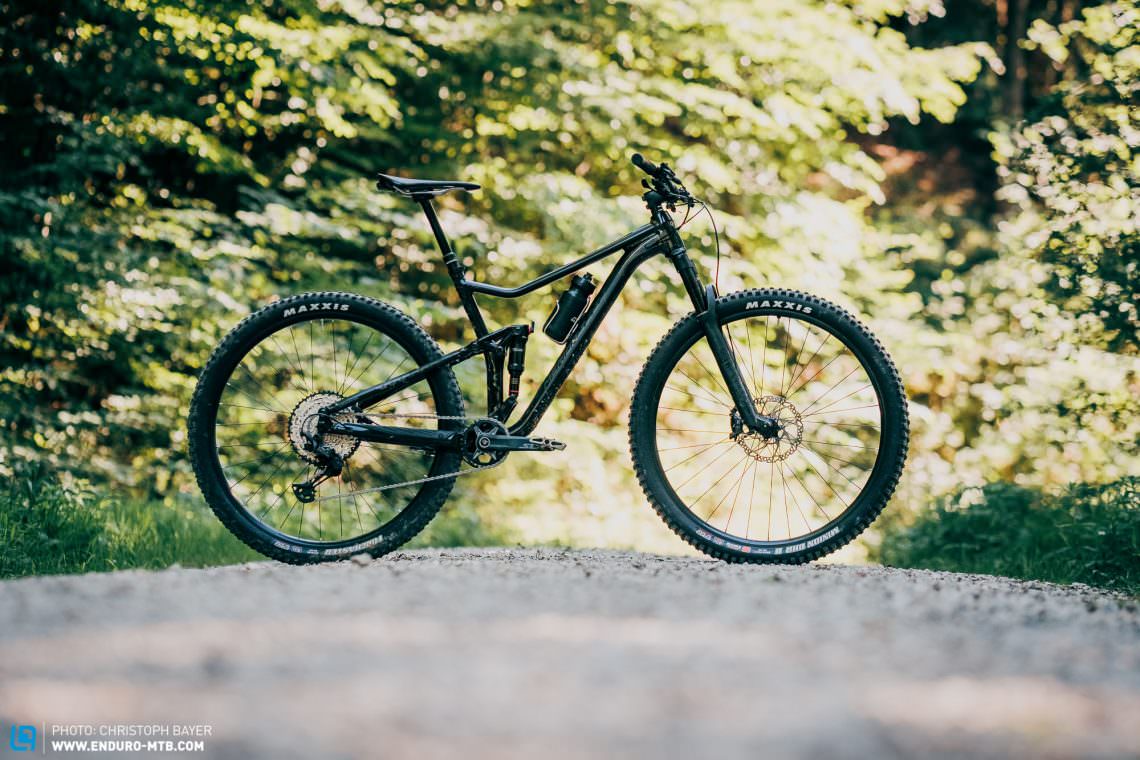
14.36 kg in size L | € 2,999 | Manfacturer’s website
The team behind MERIDA know what they’re doing! That much is evident just looking at the cockpit of the ONE-TWENTY 9.700. While the cockpits of many of the competitor’s bikes are chaotic, MERIDA have managed to arrange all the levers perfectly with the help of SRAM Matchmakers and the dimensions of the handlebar and stem are spot on too. Besides that, MERIDA have integrated a mini tool under the saddle as standard, which is very convenient.


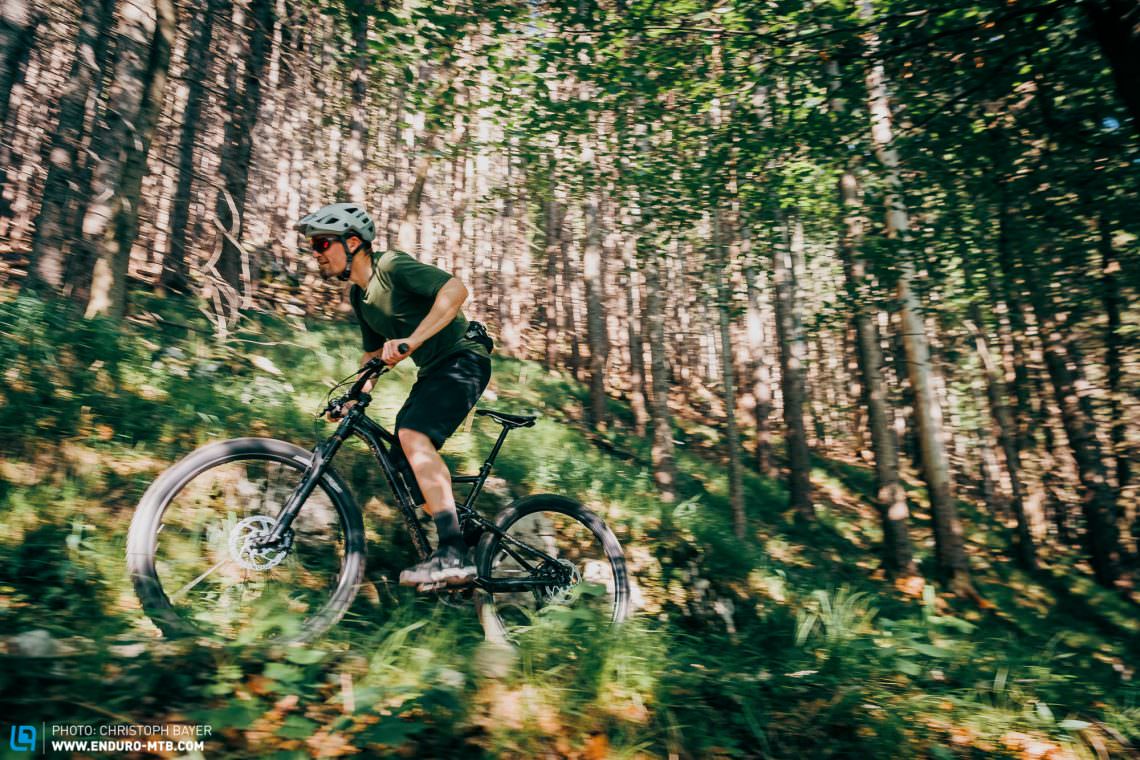
The remaining componentry of the € 2,999 ONE-TWENTY has also been carefully chosen. The drivetrain consists of a good compromise of Shimano XT and SLX components. For example, MERIDA spec a lower end crankset and cassette, investing a little more in the shifter instead, meaning you can benefit from the MULTI-RELEASE function. Keeping the speed in check on the ONE-Twenty is a set of SLX brakes with four-piston callipers. Unfortunately, these are paired with low-end rotors that only work with organic pads. Another thing we weren’t as impressed with is the fact that the wheels are tubeless-ready but don’t come with the appropriate rim tape and valves. We recommend getting things set up tubeless before leaving the shop. Speaking of tires, like so many other aspects of this bike, the MAXXIS Forekaster on the rear and Minion DHR II up front wheel are the perfect combination. The rear suspension offers 120 mm travel controlled by a Deluxe Select+ shock and a 130 mm RockShox Revelation works up front.
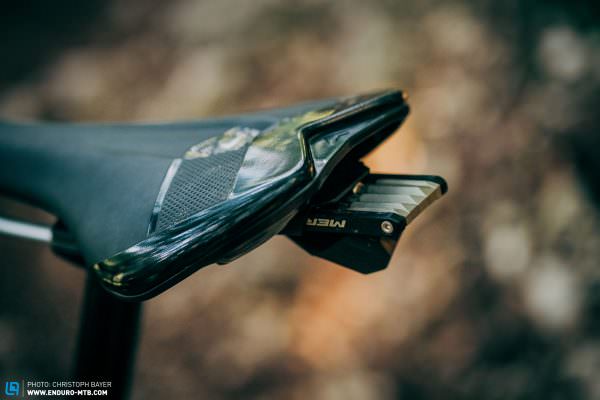
The mini-tool under the saddle comes as standard. Unfortunately, it quickly starts rusting in this exposed position and you’ll lose this feature if you swap the saddle.
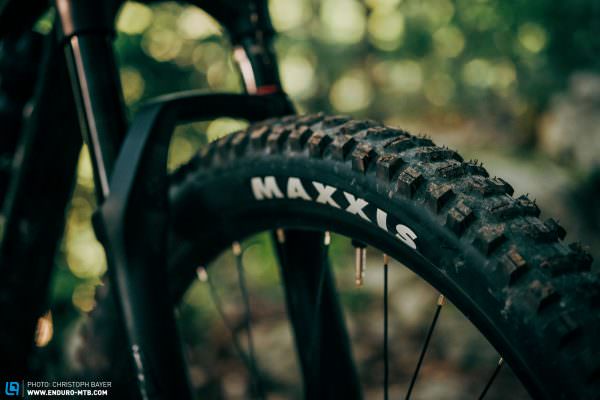
The MAXXIS Minion DHR II up front suits the overall concept of the ONE-TWENTY perfectly.
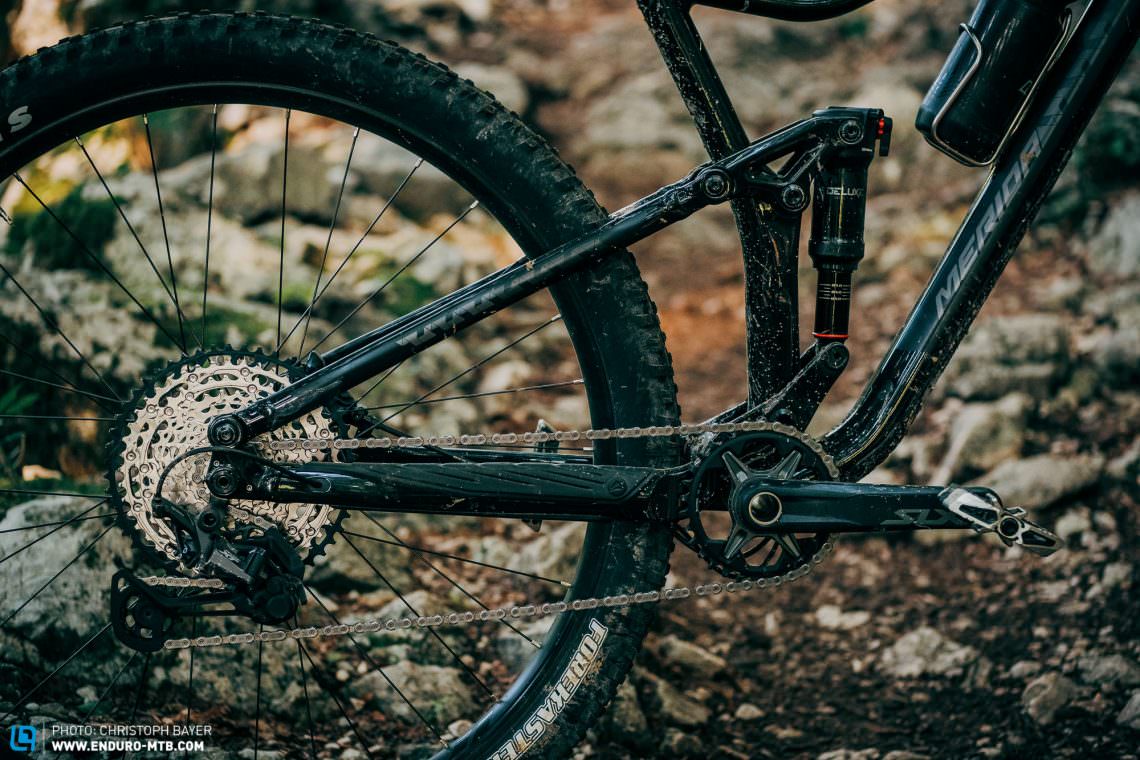
The shock on the MERIDA swings at both ends. This works really well and the rear suspension is awesome on the descents. However, it’s not the most efficient on the climbs.
MERIDA ONE-TWENTY 9.700
€ 2,999
Specifications
Fork RockShox Revelation RC 130 mm
Rear Shock RockShox Deluxe Select+ 120 mm
Seatpost MERIDA Expert TR 170 mm
Brakes Shimano SLX 180/180 mm
Drivetrain Shimano XT/SLX 32 (10-51)
Stem MERIDA Expert TR 50 mm
Handlebar MERIDA Expert TR 760 mm
Wheelset MERIDA Expert TR/Shimano SLX 29
Tires Maxxis Minion DHR II/Forekaster 2.4/2.35"
Technical Data
Size S M L XL
Weight 14.36 kg
Specific Features

The RockShox Revelation is not a high-end fork but it matches the bike’s rear suspension to a tee. Brilliant!
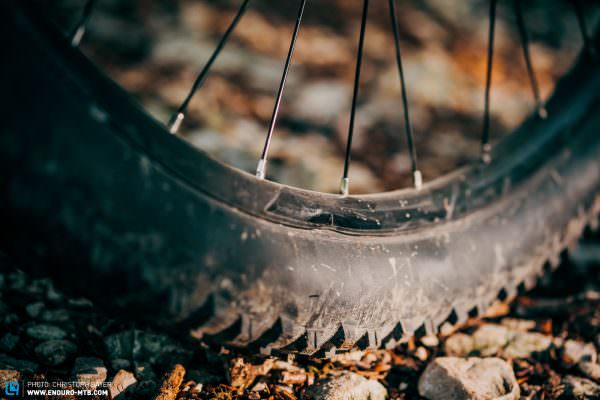
Unfortunately, the rims don’t come with tubeless tape and they also seem very soft. Without even realising it, we suddenly had an unsightly dent.

The SLX brakes themselves are awesome. However, they’ve been combined with the low-end rotors, which have less bite compared to the more expensive option.
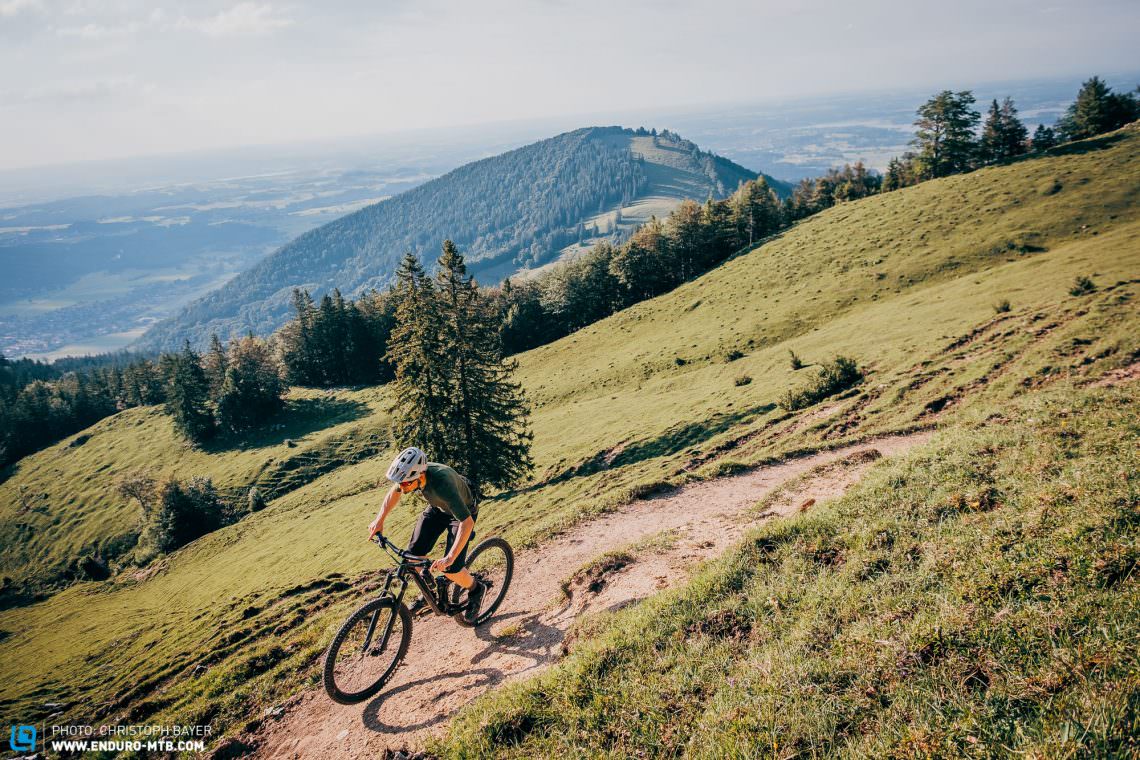
The geometry of the MERIDA ONE-TWENTY 9.700
Unfortunately, the geometry is not as well thought out and coherent as the componentry of the MERIDA ONE-TWENTY. The first thing you’ll notice is the 480 mm seat tube, which limits dropper post length. The 75.5° seat tube angle looks steep on paper, but the effective angle slackens out when you extend the seat post due to the kink in the seat tube. On the other hand, the bottom bracket is very low with a 40 mm drop. The 455 mm reach is rather compact and the head angle is just as conservative at 67.3°.
| Size | S | M | L | XL |
|---|---|---|---|---|
| Seat tube | 400 mm | 440 mm | 480 mm | 520 mm |
| Top tube | 572 mm | 592 mm | 614 mm | 637 mm |
| Head tube | 95 mm | 95 mm | 105 mm | 115 mm |
| Head angle | 67.3° | 67.3° | 67.3° | 67.3° |
| Seat angle | 75.5° | 75.5° | 75.5° | 75.5° |
| Chainstay | 435 mm | 435 mm | 435 mm | 435 mm |
| Wheelbase | 1,141 mm | 1,161 mm | 1,185 mm | 1,208 mm |
| Reach | 415 mm | 435 mm | 455 mm | 475 mm |
| Stack | 607 mm | 607 mm | 616 mm | 626 mm |

Shorts POC Essential Short | Shoes Bontrager Rally | Hip bag USWE PRIME ZULO 2
As with many of its competitors, we recommend pushing the saddle forward on the MERIDA ONE-TWENTY, if only because of the sheer length of the saddle. Once you’ve done that, you’ll sit comfortably in most scenarios. Only on very steep climbs will you wish you were sitting more centrally on the bike. The position remains stretched even with two spacers under the stem but this motivates you to push the pedals hard. Do this and the full floater rear linkage bobs noticeably, making it worthwhile to activate the climb switch on smooth climbs. Doing so also helps compensate for the slack seat tube angle. On more technical climbs, you have to work hard to keep the front wheel planted. However, the MERIDA is able to deliver a lot of traction with the shock open.
Just stay off the brakes! Despite its short amount of travel, the MERIDA is amazing downhill!
The ONE-TWENTY really comes into its own when you drop the saddle and head downhill. It’s handling here is exactly what we would use to define a downcountry bike. Although its suspension is firm and provides lots of mid-stroke support, it’s plush and sensitive enough to generate grip when you need it. The MERIDA flies on flowing trails and is capable of generating tons of speed if you pump it through berms and rollers. Do you want the KOM on a flow trail? Get this bike! The low bottom bracket positions your centre of gravity low on the bike, giving you lots of grip and control through corners. The only annoying thing on the descents was the inconsistent whirring of the SLX hub, which is completely silent at times and rattles irregularly at others. On steep, rough sections, the MERIDA isn’t the fastest bike but it always remains easy to control. Even the low-end Revelation fork performs well and we never found the front tire lacking in grip.
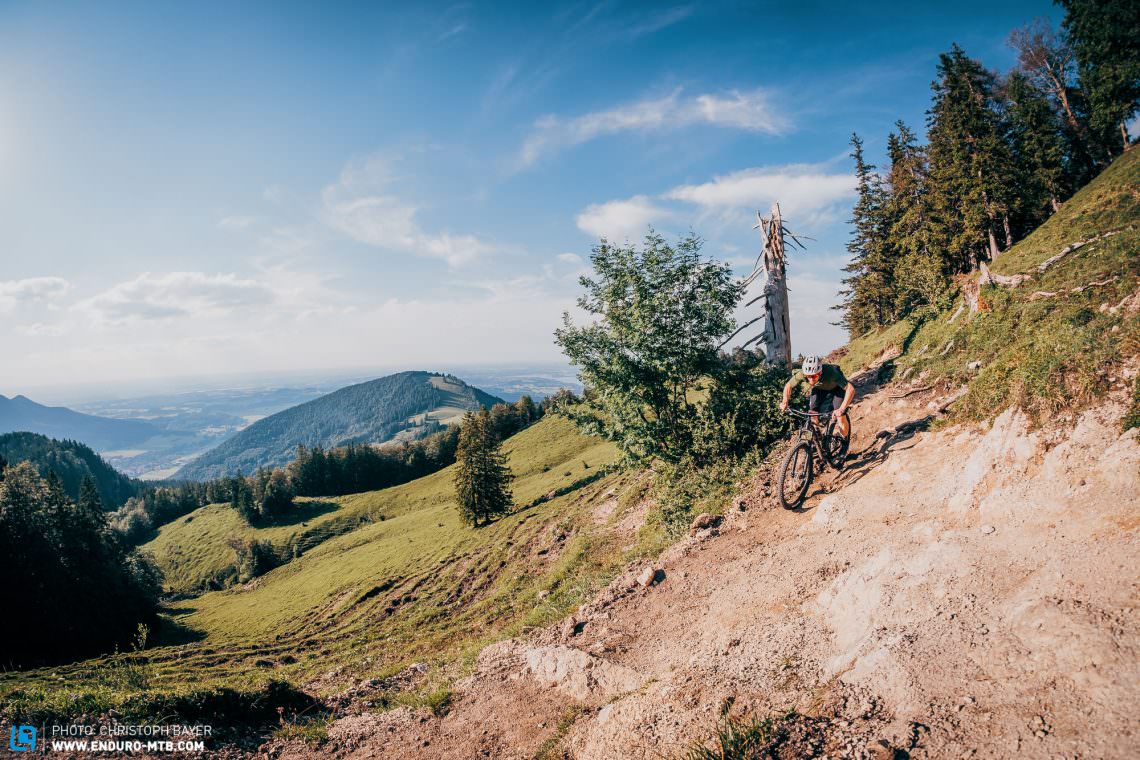
How does the MERIDA ONE-TWENTY compare to the competition?
There is no bike that performed as well on flow trails as the MERIDA-ONE TWENTY. Despite the supportive rear end, it still delivers plenty of grip, just edging away from the YT IZZO. Anyone looking for more of an all-rounder is better advised to go with the Trek Fuel EX. Unfortunately, the MERIDA’s riding position slows it down on the climbs, which is where the IZZO plays its trump card, making it the more versatile bike overall.
.
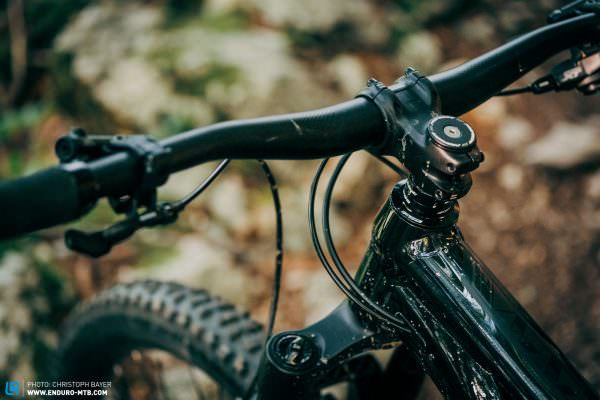

Tuning tips: push the saddle forward | convert tires to tubeless
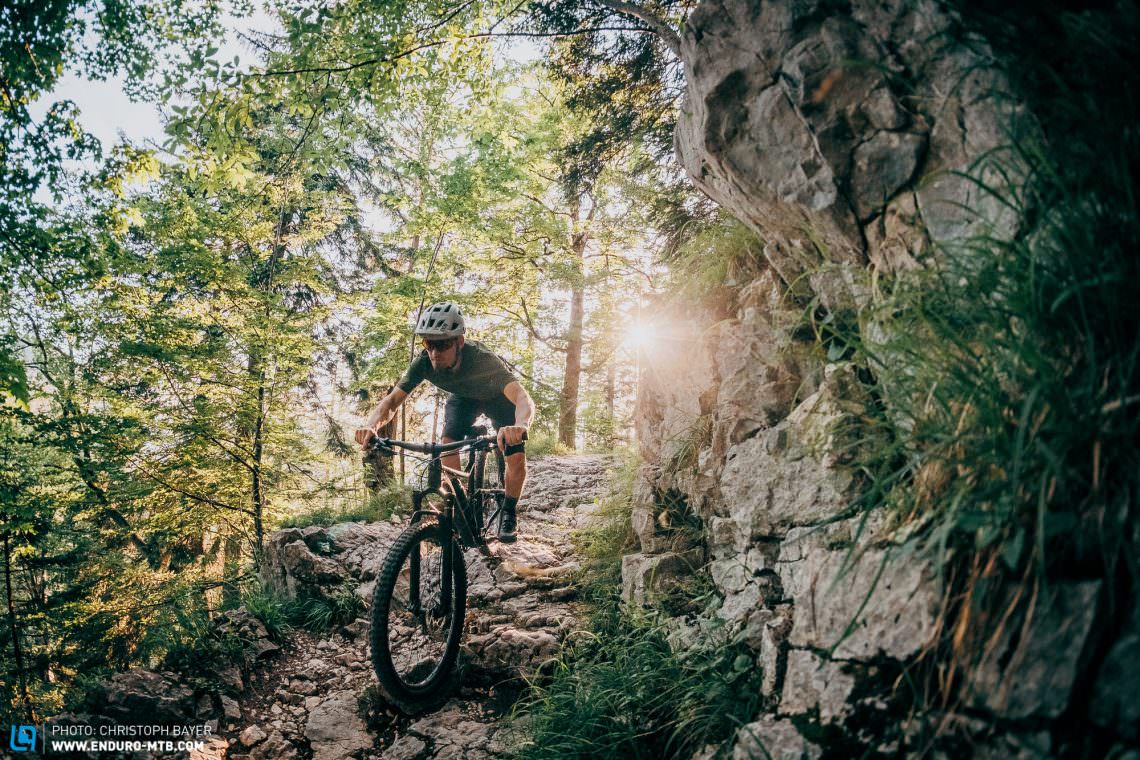
Conclusion
The MERIDA ONE-TWENTY remains one of our favourite bikes on flowing trails. It’s handling always motivates you to leave the brakes open and send jumps that are actually far too big for a 120 mm bike. It is a very capable trail bike but, unfortunately, it’s climbing performance is compromised and there are a few weak points in the spec.
Tops
- tremendous fun on flowing trails
- amazingly capable for so little travel
- clean cockpit and sophisticated spec
Flops
- seat tube angle too slack
- rims are missing tubeless tape and they dented very easily
- inconsistent noise of the rear hub is annoying
You can find out more about at merida-bikes.com
The test field
Click here for an overview of the the best trail bike under € 3,200 € in review
All bikes in test: Canyon Neuron AL 7.0 (Click for review) | FOCUS JAM 6.8 NINE (Click for review) | GIANT Trance 29 1 (Click for review) | MERIDA ONE-TWENTY 9.700 | ROSE GROUND CONTROL 3 (Click for review) | SCOTT Genius 950 (Click for review) | Specialized Stumpjumper ST COMP (Click for review) | Trek Fuel EX 8 XT (Click for review) | YT IZZO COMP (Click for review)
Did you enjoy this article? If so, we would be stoked if you decide to support us with a monthly contribution. By becoming a supporter of ENDURO, you will help secure a sustainable future for high-quality mountain bike journalism. Click here to learn more.
Words & Photos:









